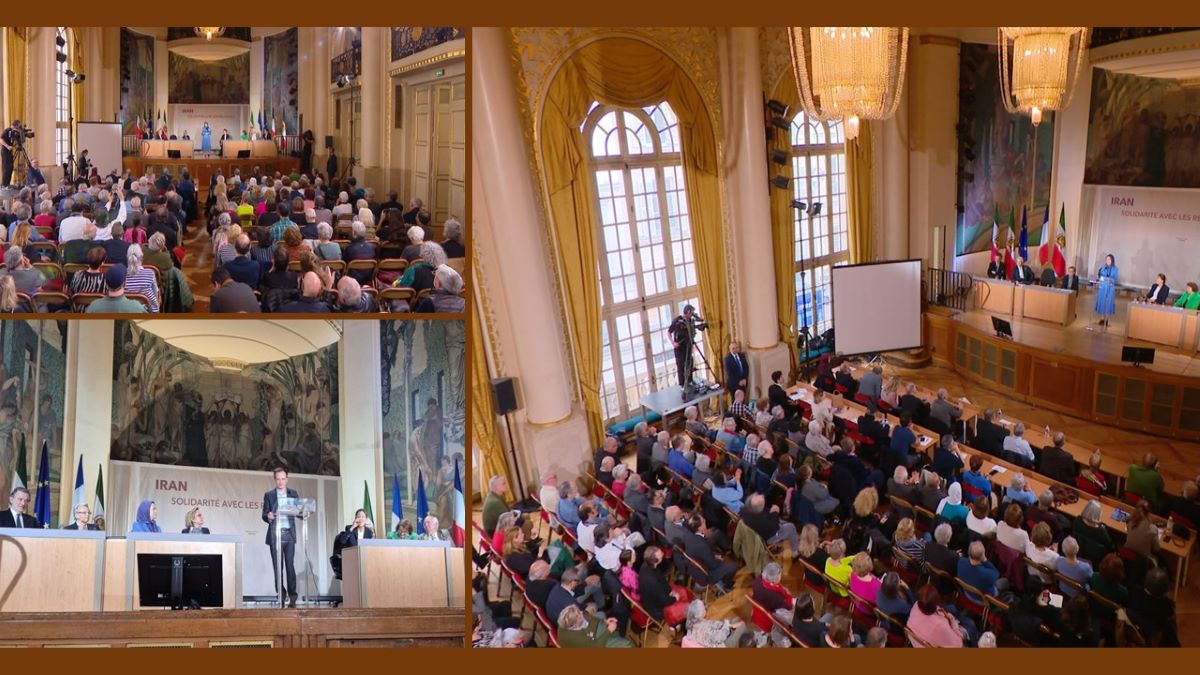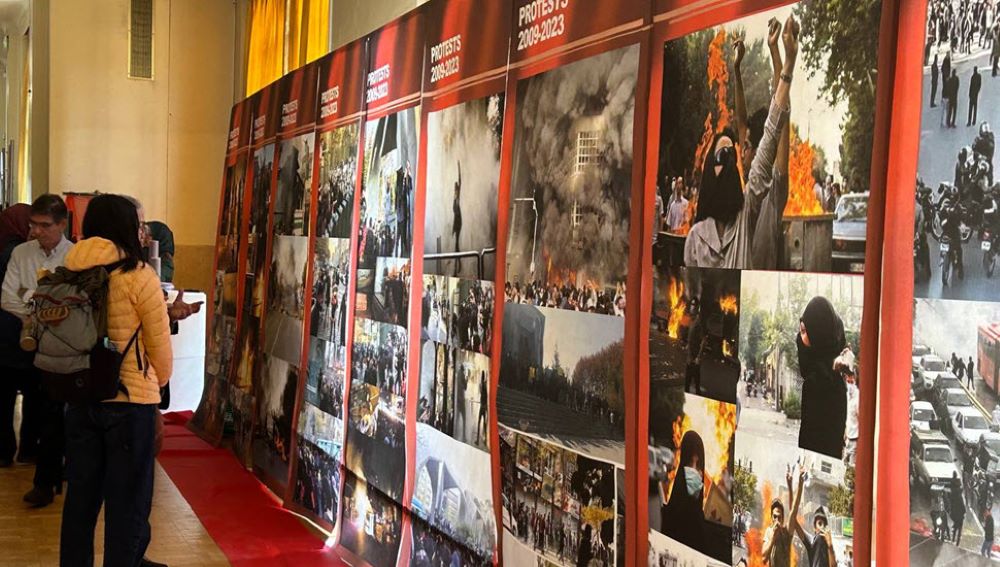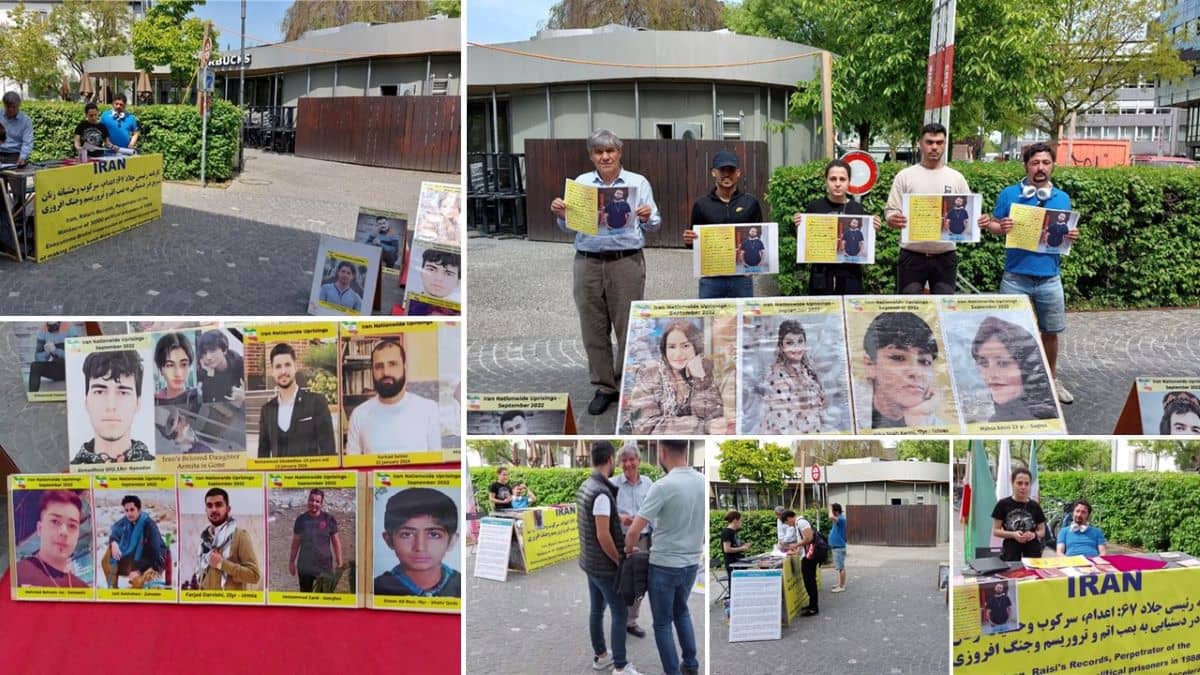How does Iran remember the 1988 massacre?
In the summer of 1988, the Iranian regime summarily and extra-judicially executed tens of thousands of political prisoners held in jails across Iran. The massacre was carried out on the basis of a fatwa by the regime’s then-Supreme Leader Ruhollah Khomeini.
Today after the 30th anniversary of 1988 massacre in Iran, Mrs. Maryam Rajavi, Iran’s opposition leader and the leader of the Iranian resistance believes that the anti-government protests, with strong participation of youths, and the activities of the resistance units inside Iran in the course of overthrowing the mullahs, are aligned with and rooted in the will of those who 30 years ago said no to the mullahs regime and demanded its overthrow.
In an online conference with the participation of the Iranian communities from more than 20 cities from Europe and North America, Mrs. Maryam Rajavi said:
https://iranfreedom.org/en/2018/08/28/maryam-rajavi-1988-massacre-iran/
“Let us look at Gohardasht of Karaj as an example. Thirty years ago, the resistant political prisoners in this city were lined up in long queues and led to corridors where they were hanged from the gallows. Three weeks ago, however, Gohardasht of Karaj turned into a battle field where courageous youth and resistance units waged an uprising.
In Shapour-e Jadid of Isfahan, in Shahinshahr, in Izeh, Dezful and Ahvaz, in Malayer, Baneh and Orumiyeh, in Zahedan and Bandar Abbas, and in Kazerun and Arak, people still remember the heroes who were hanged here and there from the gallows.
They remember their cause and why they sacrificed their lives, and why they persevered in defending their principles to the end.
The town of Aran in Kashan well remembers her child, Dr. Mansour Paydar, who used every opportunity to treat the poor and the destitute free of charge. He was arrested on his way to join the National Liberation Army and was executed in 1988.
Shahroud remembers Mahmoud Hassani who wrote a poem in prison: “At nights, when you see a glowing comet in the sky, remember the blazing flames who were extinguished in the cold nights of Evin.”
Shiraz remembers Fatemeh Zare’ii, the MEK’s candidate for the first parliamentary elections in Iran. Mahidasht of Kermanshah remembers Daryoush Reza’ii who escaped the torture chambers of Dizelabad Prison, but was rearrested and executed in 1988 along with another MEK prisoner from Ilam, Behzad Pour Nowrouz.
Isfahan remembers Fariba Omoumi. Astara remembers Mohammad Reza Saradar Rashti, and Rezvanshahr remembers Houriyeh Ramezani Nejad.
Mahallat bears lots of memories from Parviz Salimi; Qom remembers Effat Assadi; Saveh remembers Azar Kowsari; Boroujerd remembers Jamshid Assadi, and Lahijan bears memories of Mohammad Sami’zadeh. Khoy remembers Ashraf Mo’ezzi, and Naghadeh remembers Bahman Shakeri who was popular among both Kurdish and Turkish compatriots.
And Masjid Soleiman is never going to forget Ali Salehi, as Izeh remembers Nahid Kaykavous Nejad forever.
These names and memories have become eternal in the historic conscience of our society, lending a restless spirit of resistance and revolt to our cities and villages, inspiring the ultimate freedom of our homeland, Iran.
Two years ago The Iranian Resistance has hoisted the banner of seeking justice for the victims of the massacre of political prisoners 30 years ago, turning it into the main focus of political discourse in Iran today. In the last sham elections, our slogan of “No to the executioner, no to the charlatan” was widely embraced by the public such that Khamenei was furious about why the place of the executioner and the victim have been switched”.
In this regard, significant achievements have been made, such as, the inclusion of this incident in the report of the UN Secretary General and the report of the UN’s former Special Rapporteur on the Situation of Human Rights in Iran, Mrs. Asma Jahangir.
The report titled: “The Situation of Human Rights in the Islamic Republic of Iran”, (A/HRC/34/40), was distributed among the member states during the 34th session of UN Human Right’s Council on March 30th, 2017. The UN Secretary General, António Guterres, then, examined the ongoing calls for seeking truth and justice in the case of 1988 massacre of 30000 political prisoners in Iran.
Also the United Nations Special Rapporteur on the situation of human rights in Iran addressed the Seventy-second session of the General Assembly in New York on October 25, 2017.
A report on the situation of human rights in the Islamic Republic of Iran,
“This persecution of ordinary Iranians based on their political beliefs is not a recent phenomenon but is well ingrained in the Iranian Regime’s DNA.
In 1988, the Regime slaughtered over 30,000 political prisoners in just a couple of months. They buried their bodies in mass graves, refused to tell the families what had happened, and attempted to hide their “crime against humanity” from the rest of the world.
Despite recent acknowledgements of the genocide from the highest-ranking members of the Regime, the international community has still been largely silent and this silence must end.
Jahangir said: “The families of the victims have a right to remedy, reparation, and the right to know about the truth of these events and the fate of the victims without risking reprisal. I therefore reiterate my call upon the Government to ensure that a thorough and independent investigation into these events is carried out.”
Amnesty International and other organizations and personalities consider it as crime against humanity and many others consider it as the biggest crime after WWII.
Conclusion:
Undoubtedly, in history no criminal has escaped his crimes and the rulers in Tehran if not prosecuted until today and if they still continue killing people, this would not mean that they will and can escape the consequences of their crimes
So now, through the anti-government protests and the activities of the resistance units nationwide, the end of the mullahs is eminent. As Mrs. Maryam Rajavi has put it: “These names and memories have become eternal in the historic conscience of our society, lending a restless spirit of resistance and revolt to our cities and villages, inspiring the ultimate freedom of our homeland, Iran”.
Articles related to the 1988 massacre:
Dr ALejo Vidal-Quadras: The Iranian Regime Confesses To The Role Of PMOI In Organizing Recent…
Patrick Kennedy: Why Would The Regime Spend So Much Time And Energy Targeting The MEK?
Speech By Raha Heshmati Khah, Iranian Communities’ Global Conference In 30th Anniversary Of The 1988…
Azadeh Alamiyan: Iran’s Uprising Is The Best Indication Of The PMOI Popular Support In Iran





